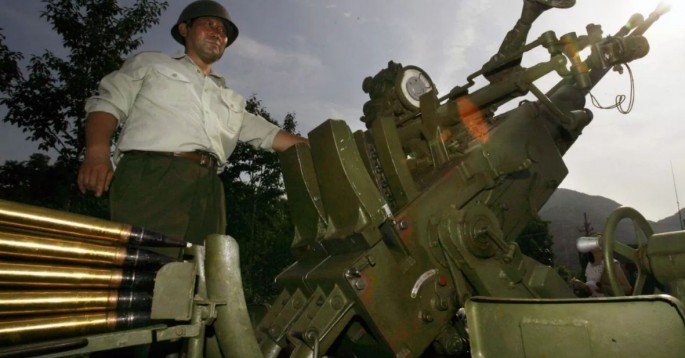Gripped by a raging drought, China is increasing the intensity of its already massive cloud seeding campaign to produce more rain despite new evidence this course of actions does the environment more harm than good.
China already spends more money every year than any other in cloud seeding, also called "artificial rainfall enhancement" and "weather modification." It believes cloud seeding actually increases the amount of rain over increasingly arid regions, especially in the parched northwest and including Beijing.
The Chinese prefer firing rockets or anti-aircraft rounds filled with silver iodide, a rain inducing chemical, into the sky where rain is desired. Another means of cloud seeding is to have aircraft disperse silver iodide and other types of chemicals.
China this week announced it will spend some $168 million to quench the thirst of its northwestern provinces. The amount is one of the largest set aside for cloud seeding, and points to the severity of a relentless "desertification" that has now transformed one third of China's land mass into deserts.
Desertification has hit the hardest the provinces of Xinjiang and Tibet, the two most restive provinces in China where independence movements by restless Uyghurs and ethnic Tibetans still command respect.
China's other northwestern provinces (Gansu, Qinghai, Shaanxi and Ningxia) have China's largest deserts and are experiencing little rain.
Desertification is now also threatening Mongolia, another uneasy province also in the north. Political stability will become more uncertain in these three problematic provinces as desertification creeps forward.
The advance of desertification is alarming. Already over one million square miles or one third of China is classified as desert or wasteland. Creeping deserts are threatening 400 million people, or close to a third of the 1.4 billion people in China. Desertification costs China some $6.9 billion every year.
Over the past decade, Beijing reported deserts expanded 1,500 square miles a year. Since China's total land area is some 3,700,000 square miles, deserts will engulf all of China in some 2,500 years if nothing effective is done to stop this threat.
One of the things China has resorted to slow down the onslaught of desertification is cloud seeding.
The China Meteorological Administration (CMA) expects the investment of $168 million to increase rainfall and snow in over 960,000 square kilometer, or over 10 percent of the country's territory. But that's a big if and China has released no data to prove its cloud seeding works and is worth the massive amounts of money being plunked into it.
CMA said the cloud seeding campaign will take three years. The money will go to the acquisition of four new cloud seeding planes; upgrading eight existing aircraft and building some 900 rocket launch systems to launch silver iodide rockets into the atmosphere.
China said its previous cloud seeding programs increased precipitation by 50 billion cubic meters from 2006 to 2016.
International experts, however, are wary of this degree of claimed success.
The effectiveness of cloud seeding has never been well established.
"(The Chinese government has) made some claims but there is no evaluation available that can substantiate their claims," said Roelof Bruintjes, a scientist at the U.S. National Center for Atmospheric Research and a proponent of weather modification a few years ago.
Cloud seeding might also actually cause other problems. Some experts claim that prematurely inducing rain prevents rain from falling elsewhere. Cloud seeding might also make hail expand, not shrink.
And, oddly, pollution (which China has in abundance) already seeds clouds automatically.



























